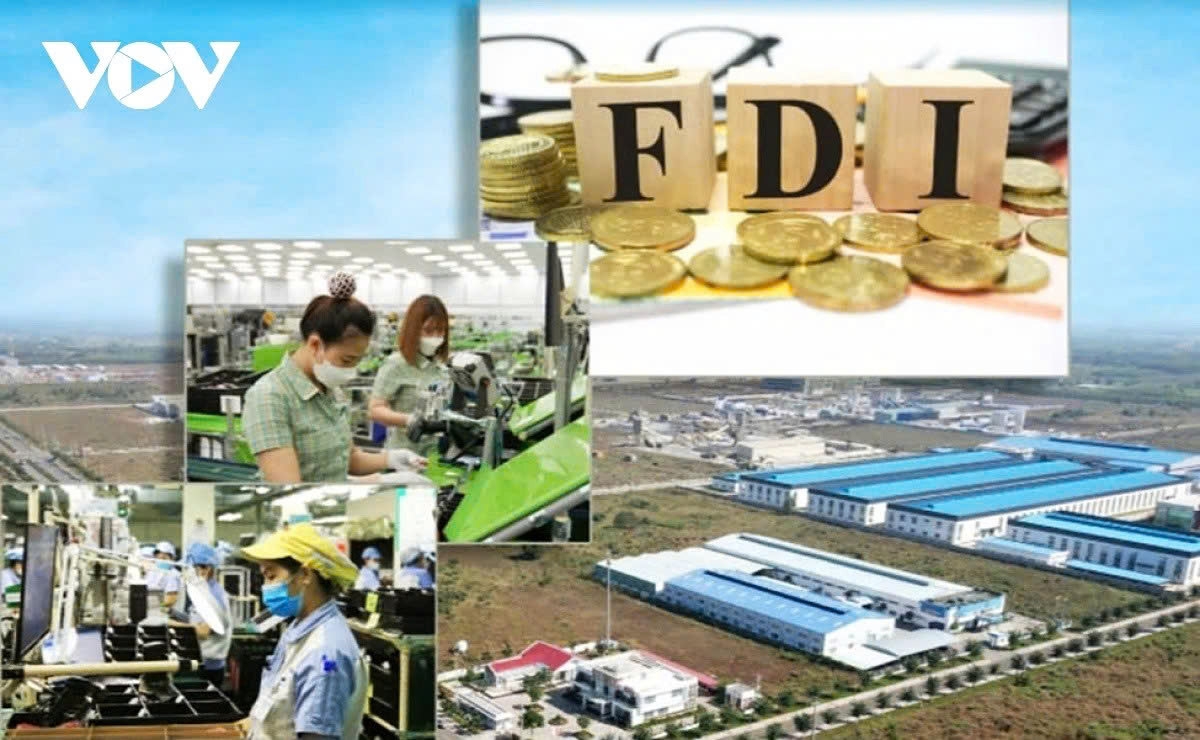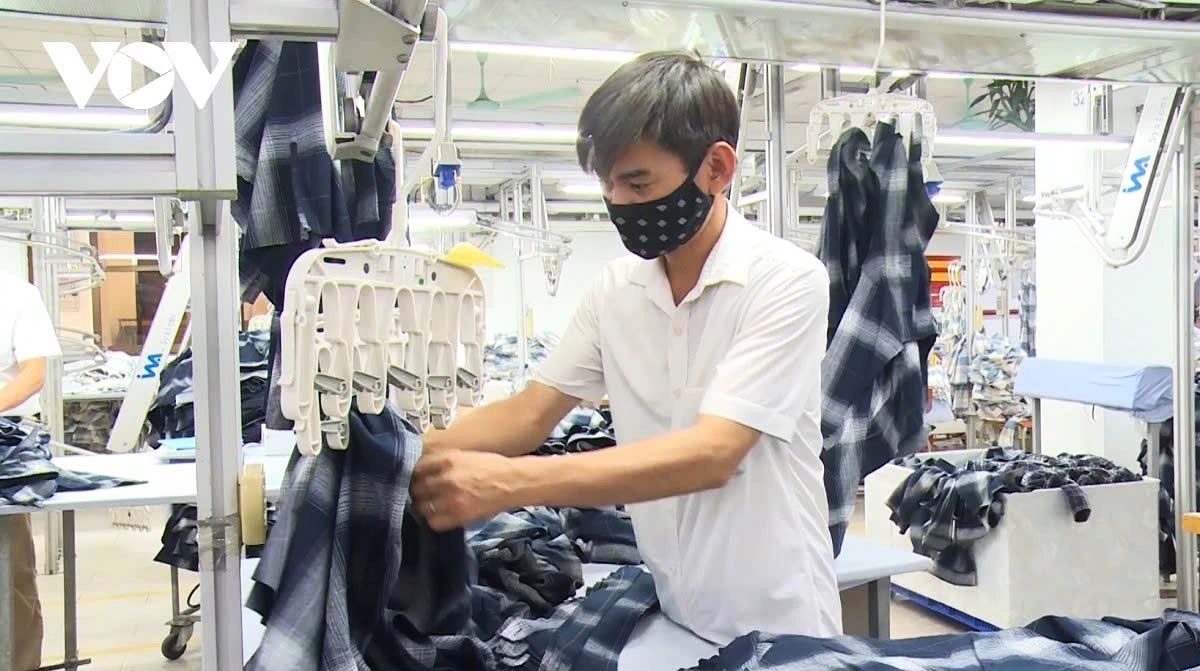
VOV.VN - Vietnam’s current growth model brings fast economic growth but is not sustainable and does not create enough value within the country, putting the economy at risk of falling into the middle-income trap.

Over the past three decades, Vietnam has pursued an economic growth model driven by exports and investment, particularly by attracting foreign direct investment (FDI). This approach has contributed significantly to Vietnam’s rapid economic growth and deep integration into the global economy. The share of goods and services exports in GDP has surged from under 30% in the early 1990s to more than 80% in recent years, making Vietnam one of the most open economies in the world.
To support this strategy, Vietnam has signed numerous next-generation free trade agreements, creating favourable conditions for both exports and FDI inflows. Statistics show the country’s exports rose 16% to US$348.74 billion in the first nine months of 2025, while FDI capital also climbed 15.2 % year on year to US$28.54 billion.
However, increasingly evident signs indicate that this growth model is revealing major limitations and risks. A core issue lies in the heavy dependence on the FDI sector. According to Dr. Nguyen Duc Hien, Deputy Head of the Policy and Strategy Department under the Party Central Committee’s Economic Commission, FDI contributes only about 20% to Vietnam's GDP and generates around 10% of domestic employment, yet accounts for more than 71% of the country's total export turnover. Moreover, profit repatriation by foreign investors has been rising, reducing domestic capital accumulation. Consequently, GDP may expand rapidly, but the growth is not matched by a proportional enhancement of internal capabilities or domestic resource accumulation.
Prof. Dr. Hoang Van Cuong, member of the Prime Minister’s Economic Advisory Council and member of the National Assembly’s Committee for Economic and Financial Affairs, highlights that while Vietnam’s annual exports reach around US$500 billion, only about US$100 billion actually stays within the domestic economy. The remaining value largely benefits foreign enterprises. This underscores Vietnam’s role as a manufacturing and assembly hub in global value chains, where the added value retained is very low - only about 8%.
In the context of volatile globalization and increasing trade barriers from major markets like the United States, the European Union, and Japan, this traditional export- and investment-led growth model is facing mounting pressure. Key export sectors such as textiles, footwear, wood processing, and food manufacturing are directly affected by retaliatory tariff measures from partner countries.

Given this reality, the question arises: should Vietnam continue to rely on this traditional growth model, or should it shift toward a new approach that avoids the middle-income trap and generates more substantive value for the economy? Prof. Dr. Hoang Van Cuong points out that Vietnam is currently in a demographic golden period, but without timely transformation, the workforce will remain stuck in low-value-added production stages like assembly and subcontracting. This not only limits income improvement but also causes Vietnam to miss opportunities to enhance labour productivity and national competitiveness.
According to Mr. Tran Quoc Khanh, former Deputy Minister of Industry and Trade, Vietnam can continue to pursue an export-driven model, but it must follow a new path. Instead of relying solely on FDI, the country must increase the domestic value-added content in exports and enhance local enterprises’ participation in high-value segments of global value chains. At the same time, it should build a more balanced growth model by fostering domestic demand.
In his opinion, domestic demand has two main pillars: public investment and household consumption. Public investment must be efficient, avoiding scattered and ineffective spending that wastes resources. Household consumption is considered the most sustainable component of domestic demand. Policies such as lowering personal income taxes could stimulate spending and enhance domestic purchasing power.
At the same time, he says, Vietnam must gradually raise the share of domestic value created by Vietnamese enterprises in the FDI value chain, by proactively engaging and securing a foothold in higher-value segments, and by shifting from passive to selective and autonomous global integration.
To support this transformation, the Vietnamese government has begun implementing institutional reforms of a breakthrough nature. The Politburo has issued several key resolutions, including Resolution No. 57 on breakthroughs in science – technology development, Resolution No. 59 on international integration in the new context, Resolution No. 66 on legal reform to support national development, and Resolution No. 68 on private sector development. These are foundational pillars for institutional reform, aimed at enabling a new growth model. These resolutions must be translated into actionable policies that remove legal barriers, improve the business environment, promote innovation, enhance productivity, and empower Vietnamese enterprises to confidently participate in global value chains.
To achieve the goal of becoming a developed, high-income economy by 2045, Vietnam cannot continue relying solely on the current export- and investment-driven growth model. Instead, it must build a new growth model based on harnessing internal strength, enhancing the competitiveness of domestic enterprises, accelerating science and technology advancement, and strengthening macroeconomic foundations for long-term sustainable development.
VOV.VN - The first nine months of 2025 witnessed strong growth in the Vietnamese economy, with the gross domestic product (GDP) expanding by 7.85% - the highest rate recorded in the past three years. Let’s take a closer look at the key economic indicators during this period.
VOV.VN - Despite global challenges, Vietnam is maintaining its ambitious 8% GDP growth target for the year, and achieving this goal will require the country to strengthen its internal capabilities and fully leverage its external partnerships, said Bruno Jaspaert, chairman of the European Chamber of Commerce in Vietnam (EuroCham).
VOV.VN - A number of international newspapers and organizations have recently highlighted Vietnam’s impressive growth pace, calling the country a symbol of resilience in Southeast Asia amid global economic uncertainty.
Bình luận
Bình luận của bạn sẽ được xét duyệt trước khi đăng